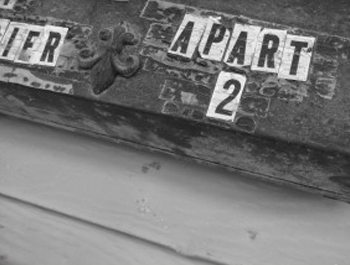Image

Ludy Biddle, Executive Director of NeighborWorks of Western Vermont
Challenge: To foster community engagement, pride and cohesiveness through an artistic project that puts digital cameras and training in the hands of residents in a Rutland, VT neighborhood struggling with drugs, crime and poverty.
In 2012, a shocking drug-related car accident took the life a young woman just exiting her place of work in Rutland, VT. The incident became a call to action — a symbol of the unprecedented toll the drug epidemic had taken on the city. In response, the community took an all-hands-on-deck approach to bettering the city, with innovative programs in mental health, education, law enforcement and other areas. It was collectively known as Project Vision.
NeighborWorks of Western Vermont focuses on rehabilitating blighted properties and creating parks in an area of northwest Rutland struggling with drugs, crime and poverty. We organized cookouts and block parties and helped build community gardens in an effort to involve the community in the process of change. But our efforts did not engage residents to the degree we had hoped.
The Photo Voice Project was conceived as a way to change this dynamic. The concept was to provide a group of locals with the tools necessary to communicate resident experiences through photography — to show others the neighborhood through their eyes.
We identified nine residents interested in the project, armed each of them with a digital camera and technical training, and asked them to tell the story of their neighborhood. We sought all ages, all backgrounds and varied perspectives. The final nine included a high school teacher, a mediator, two sisters in middle school, a city alderwoman, a retired artisan stonecutter, a resident of a home for transitioning former prisoners and a high school student.
We asked that each participant select several of their most meaningful images and exhibit them along with a written artist statement.
 We enlisted local artist Donna Goodhale as a photographer to train and support the participants. Though we asked Goodhale to donate an hour every week, she ended up contributing many more hours. Not only did she provide technical instruction, she also guided and supported the participants' creative process.
We enlisted local artist Donna Goodhale as a photographer to train and support the participants. Though we asked Goodhale to donate an hour every week, she ended up contributing many more hours. Not only did she provide technical instruction, she also guided and supported the participants' creative process.Goodhale helped facilitate regular group forums, which fostered creative growth and helped participants appreciate different perspectives. Remarks such as, "I never looked at it that way before," were common in these meetings. She became both mentor and art teacher.
Participants were not censored in any way. They were, in fact, encouraged to tell the truth as they saw it: the good, the bad and the ugly. This meant that there were some difficult and emotional conversations regarding different experiences - and perceptions — of the community. Yet there was a catharsis to this conflict: Participants built strong bonds with each other and felt an investment in each other's success.
It wasn't just the bonds between the participants that nurtured new community engagement, it was the very exercise of paying attention to the details of the community. The daily grind of family responsibilities, school and work can disconnect anyone from their immediate surroundings — the most disturbing elements, as well as the most beautiful. The participants soon discovered that, among other things, a camera can be a powerful tool for making people pay attention.
Photographers engaged with people when they took photographs. They had to get signed waivers from people they photographed, which often forced them to interact with new people.
The most gratifying part of the project is seeing the continued positive change in the lives of those involved and in providing community uplift and inspiration. It is a source of pride for the community. The exhibitions garnered interest from major publications and the photos have been shown at the Chafee Gallery, The Vermont Folk Life Center, Rutland Regional Medical Center and the Vermont State Capitol.
All the participants have attended at least one of the public events about their work and they are always excited to connect with other photographers from the group. The resident of Dismas House, transitioning back into society from prison, has thrived since participating in the project, finding full-time work and encouraging his peers to give back to the community. He attended a recent groundbreaking in the neighborhood along with other participants.
We learned that impact of Photo Voice could be larger than anticipated. The project was the first collaborative effort of Project Vision and its success was a powerful validation of its mission. Photo Voice inspired a similar project in another section of Rutland and has garnered interest from Middlebury College, which sponsored a recent public discussion in the Sociology Department.

